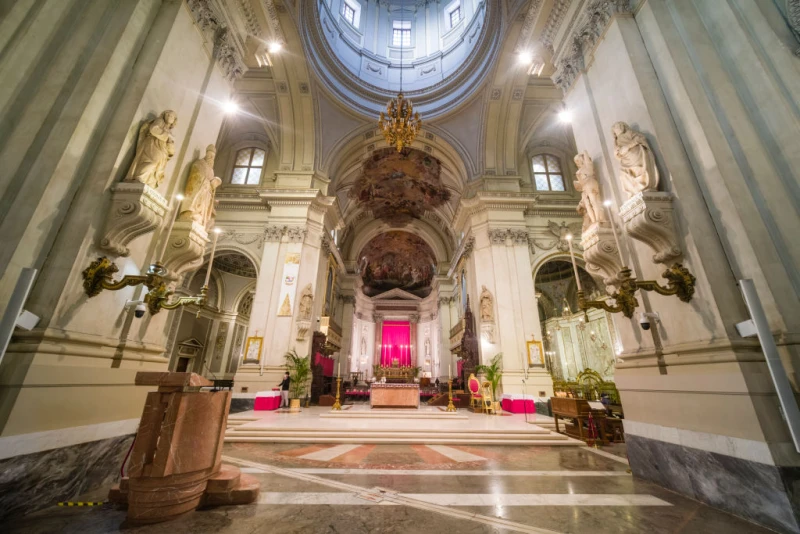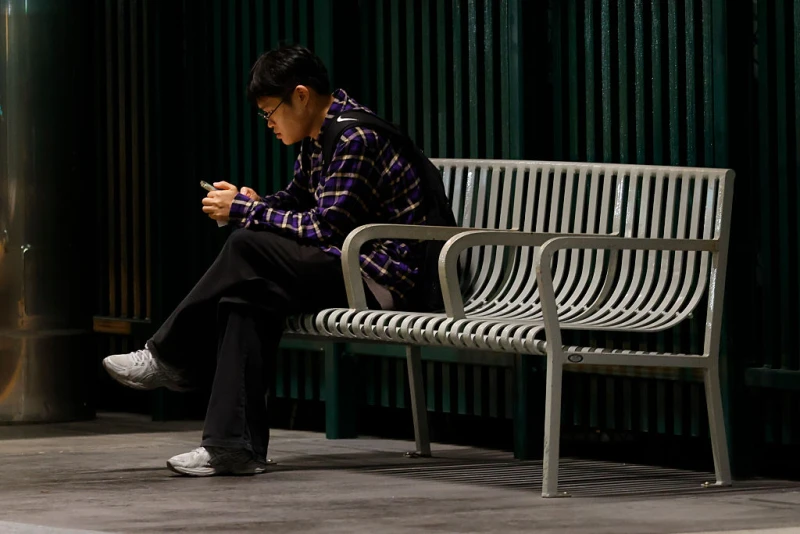The ‘Vivere Christus’ awards: Discipleship in action on World Mission Sunday #Catholic – 
“… For here the saying is verified that ‘One sows and another reaps.’
I sent you to reap what you have not worked for; others have done the work, and you are sharing the fruits of their work.”
Jn. 4:37-38
I have often thought of these words from St. John’s Gospel, “One sows and another reaps,” when I consider the ministry and efforts of our Bishop Emeritus Arthur Serratelli, as our diocese continues to “reap” the efforts of the “seeds sown” by Bishop Serratelli in his 16 years of service and leadership as bishop of our diocese. One of the countless examples of the ways in which I have benefitted and been supported in my five-plus years as bishop is the tradition that was initiated by Bishop Serratelli in 2009 for an annual recognition of parishioners, parish leaders, and ministers who receive the Vivere Christus Award.
This year, the Vivere Christus Ceremony was held on Sunday, Oct. 19, which was also World Mission Sunday. In preparing for Mass and for the Vivere Christus Ceremony, I realized that there was a spiritual “connection” between what (and who) was being celebrated by the Universal Church and what we were doing, here in our diocese, by means of the Vivere Christus Ceremony.
I hope that it may be helpful for those who were not able to attend the Vivere Christus Ceremony to read the text of the homily that I offered (below). As individuals and families, as parishes and as a diocese, we can be aware that there are many challenges to living our faith, day by day. Still, as we pray for and support missionaries and the missionary work of the Church, and as we recognize the generosity, dedication, and faithful service of those who receive the Vivere Christus Award, we can be renewed, inspired, and strengthened to live as true “pilgrims of Hope” and be the missionary disciples Jesus is calling us to be.
It was providential that Mission Sunday should be the day when the Vivere Christus medals are awarded, since the intersection between our baptismal call to be evangelizers and the ministry of missionaries and life in Christ is evident. Jesus himself directs our goals through our baptism into his Paschal Mystery, “Go, therefore, and make disciples of all nations, baptizing them in the name of the Father, and of the Son, and of the Holy Spirit” (Matthew 28:19). All of our efforts draw their life from the Lord Jesus, “I am the vine, you are the branches. Whoever remains in me and I in him will bear much fruit, because without me you can do nothing (John 15:5). The witness of members of our own families and parish communities helps us to understand our call to share the gospel with others.
To evangelize is to look outward to discover where we can most effectively be instruments of God’s love and mercy. Missionaries are keenly aware of the need to take the dynamism of the gospel to wherever they are sent by God, even to distant corners of a world far from their experience. Most of those missionaries, I feel quite certain, would tell us that the power of the gospel was first understood through the love of their parents, through grandparents whose whole lives were suffused with faith, or from catechists, teachers, and members of their parish family who demonstrated the joy of faith in action. In presenting the Vivere Christus Awards, we not only honor the contributions of individuals — important as that is in its own right — but we recognize the call of our common baptismal vocation to announce the truth that life in this world and in the next is found in our relationship to Jesus Christ.
In establishing the Vivere Christus award, Bishop Serratelli insightfully recognized the indispensable need to foster in our families and parishes the yearning for holiness of life that is found in our relationship with Jesus Christ in the sacraments He gives us to celebrate His presence among us and in His unchanging and living Word that directs our attention toward love of neighbor as a guidepost to heaven.
Homily at the Vivere Christus Awards Ceremony, Oct. 19, 2025:
We just heard from St. Paul’s Letter to the Philippians:
“…What difference does it make, as long as in every way, whether in pretense or in truth, Christ is being proclaimed? And in that I rejoice. Indeed, I shall continue to rejoice, for I know that this will result in deliverance for me through your prayers and support from the Spirit of Jesus Christ.
My eager expectation and hope is that I shall not be put to shame in any way, but that with all boldness, now as always, Christ will be magnified in my body, whether by life or by death. For to me life is Christ, and death is gain…”
(Phil. 1: 18-21)
The Award and Recognition that you receive today is called “Vivere Christus.” These words of St. Paul are also the Episcopal Motto of Bishop Arthur Serratelli, our bishop emeritus: “Vivere Christus est” — “To Live is Christ.”
Each year, we ask our pastors and parish leaders to nominate women and men who live these words, who live, as St. Paul says, so that Christ and His Love are proclaimed. Today, we recognize and give thanks for your lives of Faith, Hope, and Love; for your generosity of time, talent, and treasure; for the ways in which you share your gifts and talents in service, leadership, and ministry.
In this Jubilee Year of Hope and on this day when the Universal Church celebrates World Mission Sunday, we give thanks for the ways in which you live for Christ as Pilgrims of Hope and as Missionaries of Hope among God’s people, especially here in our Diocese of Paterson.
In preparing for Mass today, I was doing a little research on “World Mission Sunday” and I came across this summary on the website of the Pontifical Missions Society of the United States:
- Celebrated every year on the second-to-last Sunday of October, World Mission Sunday is the day when Catholics around the world unite to support the missionary work of the Church.
- Established by Pope Pius XI in 1926, it remains the only annual global collection that directly supports the 1,124 mission territories where the Church is young, struggling, or persecuted.
- On this day, every parish, in every diocese, in every country, joins in prayer and giving to ensure that missionaries can continue their vital work — building churches, forming priests, supporting catechists, and serving communities in need.
- Be a missionary of hope this World Mission Sunday and support the work of the Pope’s Missions.
- On this day when, Catholics around the world unite to support the missionary work of the Church.
Be a Missionary of Hope
How appropriate and meaningful it is that Catholics from all parts of the Diocese of Paterson unite to recognize the ways in which our Vivere Christus honorees live as “Missionary Disciples” in our parishes and contribute to the “missionary” work of Evangelization, Catechesis, Charity, and countless other ministries.
In a video message for World Mission Sunday, Pope Leo XIV invites every Catholic parish in the world to take part in World Mission Sunday. He also shares his personal experience, as he says:
“When I served as a missionary priest and Bishop in Peru, I saw firsthand how the faith, the prayer, and the generosity shown on World Mission Sunday can transform entire communities.”
I am very happy and blessed to be able to echo Pope Leo’s words and say that, as Bishop of Paterson, I get to see “firsthand,” every day, how the faith, dedication and generosity of our priests and pastors, deacons and consecrated religious, parish and diocesan staff members and leaders help to build up the Church of our diocese. I also get to see “firsthand” that we could not be the vibrant Church that we are without dedicated and generous volunteers, parishioners, and parish leaders who are represented each year by those who receive the Vivere Christus Award.
Pope Leo concludes the video message with these words: THANK YOU for everything you will do to help me to help missionaries throughout the world.
To our Vivere Christus recipients, to your families, pastors, and co-workers, on behalf of the Church of our Paterson, I say THANK YOU for helping each of us to strive each day to be able to say with St. Paul, “Vivere Christus,” “for to me, Life is Christ.”
–  “… For here the saying is verified that ‘One sows and another reaps.’ I sent you to reap what you have not worked for; others have done the work, and you are sharing the fruits of their work.” Jn. 4:37-38 BISHOP KEVIN J. SWEENEY I have often thought of these words from St. John’s Gospel, “One sows and another reaps,” when I consider the ministry and efforts of our Bishop Emeritus Arthur Serratelli, as our diocese continues to “reap” the efforts of the “seeds sown” by Bishop Serratelli in his 16 years of service and leadership as bishop of our
“… For here the saying is verified that ‘One sows and another reaps.’ I sent you to reap what you have not worked for; others have done the work, and you are sharing the fruits of their work.” Jn. 4:37-38 BISHOP KEVIN J. SWEENEY I have often thought of these words from St. John’s Gospel, “One sows and another reaps,” when I consider the ministry and efforts of our Bishop Emeritus Arthur Serratelli, as our diocese continues to “reap” the efforts of the “seeds sown” by Bishop Serratelli in his 16 years of service and leadership as bishop of our
Read More
![State-level religious freedom protections grow in recent years #Catholic
Thirty states have adopted some version of the Religious Freedom Restoration Act (RFRA) first signed into law by President Bill Clinton in 1993. / Credit: Leigh Prather/Shutterstock
Washington, D.C. Newsroom, Oct 21, 2025 / 17:56 pm (CNA).
Protections for religious freedom in the U.S. have grown in recent years with multiple states adopting laws to strengthen the constitutional right to freely exercise one’s religion.As of 2025, 30 states have adopted a version of the federal Religious Freedom Restoration Act (RFRA) or similar legislative protection for religious freedom. The most recent states to adopt those protections for state-level laws were Georgia and Wyoming in 2025 and Iowa, Utah, and Nebraska in 2024. West Virginia and North Dakota adopted them in 2023 and South Dakota and Montana did the same in 2021.RFRA was first adopted in 1993, when then-President Bill Clinton signed it into law to expand religious freedom protections. Under the law, the federal government cannot “substantially burden” the free exercise of religion unless there is a “compelling government interest” and it is carried out in the “least restrictive” means possible.Congress passed the law in response to the 1990 Supreme Court decision in Employment Division v. Smith, which asserted that the First Amendment was not violated as long as a law was “neutral and generally applicable.” The law was intended to provide a stronger safeguard for the free exercise of religion than what was provided by the highest court. Bipartisan consensus gone, but opposition weakeningWhen RFRA was adopted at the federal level in the 1990s, the protections had overwhelming bipartisan support. In the 2010s, that bipartisan consensus waned as most Democrats voiced opposition to the protections.Tim Schultz, the president of the 1st Amendment Partnership, told CNA that in 2013, two states adopted RFRA with nearly unanimous support from Republicans and about two-thirds support from Democrats. However, the law became more divisive after the 2014 Supreme Court ruling in favor of exempting Hobby Lobby from a mandate to provide abortifacient drugs based on RFRA.“That [bipartisan support] seems like a million years ago,” Schultz said. “Now I would say Republican support is about the same as it was then. Democratic support is under 5%.”Although Schultz did not express optimism that bipartisan support could return any time soon, he credited some cultural shifts for the strong success in Republican-leaning states over the past four years.From 2014 through 2020, he said business groups and LGBT groups “were working together very strongly … in opposition to religious freedom bills” because they saw them as threats to certain anti-discrimination laws related to workplace policies from religious employers.However, post-2020, he said, “the politics of RFRA are far more favorable,” and he noted there has been “far less opposition from business groups.”One reason for this change, according to Schultz, was the widely-published story of NCAA championship swimmer Lia Thomas, a biologically male swimmer who identified as a transgender woman and competed in women’s sports. This led polling to “change on every issue related to LGBT,” he noted.Another reason, he argued, was the response to transgender-related policies by Target and the Bud Light ads, which led to “consumer anger at both of them.” He noted the money lost by the corporations “made business groups say ‘we are not going to have the same posture.’”In spite of the partisanship that fuels the current debate, Schultz noted RFRA has been used to defend religious freedom on a wide range of issues, some of which have pleased conservatives and others that have pleased progressives.Although RFRA has been used to defend religious freedom on issues related to contraception, abortion, gender, and sexuality, it has also been used to defend religious organizations that provide services for migrants. “[RFRA is] not politically predictable,” Schultz said.](https://unitedyam.com/wp-content/uploads/2025/10/state-level-religious-freedom-protections-grow-in-recent-years-catholic-thirty-states-have-adopted-some-version-of-the-religious-freedom-restoration-act-rfra-first-signed-into-law-by-president.webp)



:max_bytes(150000):strip_icc():format(jpeg)/TAL-lead-image-telluride-COMOUNTAINTOWNS1025-dc213c60f7874dd9991f4e5f5b6521b2.jpg)


![How to convey the serenity of a martyr? The challenge of painting Peter To Rot’s portrait - #Catholic -
Artist Raúl Berzosa works on the portrait of St. Peter To Rot. / Credit: Photo courtesy of Raúl Berzosa
ACI Prensa Staff, Oct 21, 2025 / 09:00 am (CNA).
Malaga, Spain-born artist Raúl Berzosa has painted portraits of popes for the Vatican, and his works have graced the covers of booklets at Vatican ceremonies and even the Stations of the Cross at the Colosseum. However, as he himself confessed on X, none had ever hung on the façade of St. Peter’s Basilica.That honor came this week with the portrait of St. Peter To Rot, which Berzosa painted for the saint’s canonization ceremony on Oct. 19. The Vatican commissioned the Catholic artist to paint the official portrait, which has been displayed since Oct. 17 on the façade of St. Peter’s Basilica. Berzosa considers the work to be a fruit of grace and the culmination of a life dedicated to reflecting the light of faith in art.Peter To Rot, who was born in Papua New Guinea, served as a catechist and died a martyr for the faith in 1945. He was canonized on Oct. 19 along with six others. In 1995, during his trip to Papua New Guinea, St. John Paul II described To Rot’s life as “a beacon shining bright, a signal fire leading you to hold aloft the noble ideals which inspired him: faith in God, love of family, service of neighbor, and unswerving courage in the face of trials and sacrifice.”Berzosa, 46, renowned worldwide for his realistic style and religious themes, explained to ACI Prensa, CNA’s Spanish-language news partner, that with his work depicting the Papuan saint, he sought to convey the inner light of which the Polish pope spoke.Official portrait of St. Peter To Rot. Credit: Courtesy of Raúl Berzosa“If the portrait manages to convey some of Peter To Rot’s bright inner light and helps others strengthen their faith, then the work will have fulfilled its true function,” the Spanish painter said.“I hope that the faithful see in his gaze not only a martyr but a man full of peace, love for his family, and fidelity to the Gospel,” he added.For Berzosa, To Rot’s essential witness lies in the conviction that holiness “can be lived out in everyday life, even in the midst of suffering, as in his case.”The artist said he wanted the lighting effects in the portrait “to emerge from within the face itself, something serene that engages the viewer and seeks to convey hope.” Berzosa also noted that the “light blue and green brushstrokes” create a warm atmosphere, with the color and the overall composition seeking to accompany “this luminous message.”The challenges of painting the first Papuan saint“The main challenge was to approach Peter To Rot’s image itself with respect and accuracy. To achieve this, I had some black and white photographs as well as a color portrait based on one of the photographs. All of this helped me create my painting,” he said.In Berzosa’s portrait, To Rot is dressed in the traditional attire of local catechists: a white shirt and a type of blue wrap.“When the Japanese threatened the catechists and prohibited any apostolic activity, the vast majority — out of fear — hid the cross. Peter To Rot was the only catechist who continued to proudly display the white cross that identified him as a catechist,” Berzosa noted.“In one hand he holds a Bible and in the other [open hand he shows] two rings, a reference to his defense of marriage. A cross hangs from his neck,” the artist explained. To Rot wanted to die wearing that cross, which would later be key to identifying his mortal remains. Behind the figure of the saint, the countryside of his native land at the time can be seen.For the most accurate depiction, the painter researched photographs, traditional clothing, and other local references. “Throughout this work, I was assisted by Father Tomás Agustín Ravaioli, vice postulator of the cause,” Berzosa explained.Portraying a martyrThe artist noted that the lives of martyrs, although often short, are “full of meaning, dedicated out of love and fidelity to the Lord.” He said he always seeks to convey the serenity of these witnesses to the Gospel in the most decisive moment of their lives.“I try to understand that mixture of strength and peace of someone who gives his life for Christ,” he said.“When I paint portraits of martyrs, there is a special respect for the person portrayed. Their witness transcends cultures and eras,” he noted.This story was first published by ACI Prensa, CNA’s Spanish-language news partner. It has been translated and adapted by CNA.](https://unitedyam.com/wp-content/uploads/2025/10/how-to-convey-the-serenity-of-a-martyr-the-challenge-of-painting-peter-to-rots-portrait-catholic-artist-raul-berzosa-works-on-the-portrait-of-st-peter-to-rot-credit-photo-court.webp)










![Catholics across the U.S. encouraged to participate in Respect Life Novena - #Catholic -
null / Credit: Ivon19, public domain via Wikimedia Commons (CC-BY-SA-4.0)
CNA Staff, Oct 21, 2025 / 06:00 am (CNA).
Catholics across the United States are encouraged to participate in the national Respect Life Novena beginning Oct. 22 in an effort to unite in prayer for the protection of the unborn and all those affected by abortion.The Respect Life Novena is offered annually by the United States Catholic Conference of Bishops (USCCB) and consists of nine days of prayers, Scripture readings, and suggested acts of reparation.Some of the prayer intentions in this year’s novena include ones for the protection of life from conception to natural death, for those who have undergone an abortion to experience God’s healing and mercy, for those with disabilities to be treated with dignity, and for an end to the death penalty, among others.This year, the Respect Life Novena will be available on the free version of the Hallow app and a different U.S. bishop will lead the faithful in prayer each day. The bishops taking part include Bishop Daniel Thomas of Toledo, Ohio; Archbishop Alexander Sample of Portland, Oregon; Bishop Michael Burbidge of Arlington, Virginia; Bishop Robert Brennan of Brooklyn, New York; Bishop Chad Zielinski of New Ulm, Minnesota; Bishop Barry Knestout of Richmond, Virginia; Bishop Thomas Paprocki of Springfield, Illinois; Bishop Elias Zaidan, the Maronite eparch of Our Lady of Lebanon of Los Angeles; and Bishop Stephen Parkes of Savannah, Georgia. Archbishop Samuel Aquila of the Archdiocese of Denver is urging all Catholic Coloradoans to take part in the novena — especially as Colorado continues to expand access to abortion.On Oct. 25, the fourth day of the novena, Aquila will be leading a Eucharistic procession around Denver’s Planned Parenthood facility — the largest abortion provider in the state. “The Respect Life Office is filled with joy and anticipation for the upcoming Eucharistic procession with Archbishop Aquila,” said Jennifer Torres, community engagement coordinator for Respect Life Denver, a ministry of Catholic Charities, in an interview with the Denver Catholic. “This sacred time offers our community a beautiful opportunity to come together in witness and worship, united in our shared mission to be light in a darkened world.”“As we walk with Christ truly present in the Eucharist, we are reminded that he calls us to be faithful, to carry hope, and to boldly proclaim the dignity of every human life,” she added. “We believe that a deepened devotion to the Eucharist has the power to transform hearts and ultimately renew a culture that too often chooses death over life. We invite all to come as they are, [to] rest and pray with us.”Earlier this year, the Colorado Legislature passed a measure that mandates taxpayer funding for elective abortions. As part of the new law, an earlier provision in the state constitution that prohibited public funds for abortion has now been repealed; the new law requires abortion coverage for Medicaid patients and Child Health Plan Plus program recipients using state money. “The allocation of millions of dollars in taxpayer funds to subsidize the deliberate ending of innocent life and harm of women is a tragedy for Colorado,” the Colorado Catholic Conference, which represents the state’s bishops, wrote April 24. The Respect Life Novena can be found here.](https://unitedyam.com/wp-content/uploads/2025/10/catholics-across-the-u-s-encouraged-to-participate-in-respect-life-novena-catholic-null-credit-ivon19-public-domain-via-wikimedia-commons-cc-by-sa-4-0cna-staff-oct-21-2025-0600.webp)
